Complex oscillators don’t need to be scary. Cosmotronic’s take on the classic formula is as user-friendly as it is harmonically versatile.
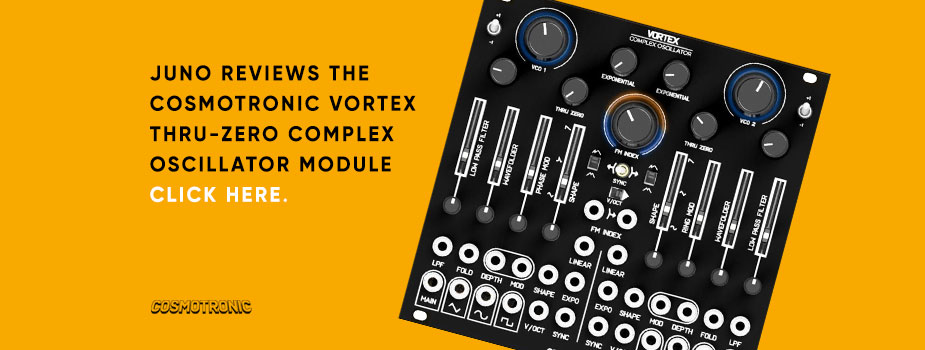
The name might sound intimidating, but complex oscillators are, ironically, more simple than you might expect. Essentially it’s a single module with two oscillators, internally routed for cross-modulation. The Cosmotronic Vortex is a new offering from a relatively new brand which has already impressed us with some innovative module releases. The Vortex doesn’t tear up the rule book but aims to simplify the whole process, making it easy to explore the extensive range of tones which can be produced by a complex oscillator.
Let’s start with the basics. The point of complex oscillators is to allow a large amount of harmonic flexibility within the oscillator itself, before you patch the signal out to filters and the like. It includes elements of additive synthesis (combining multiple waveforms to create harmonics and texture) but also traditional analogue synth techniques like frequency modulation and wavefolding. The result is something with far more depth than you’d get from a conventional VCO. Of course, you could probably achieve similar results by hooking up a few separate modules, but the all-in-one approach makes everything much simpler in terms of routing. More importantly, it streamlines the entire process, so that it’s quicker and easier to achieve interesting results.
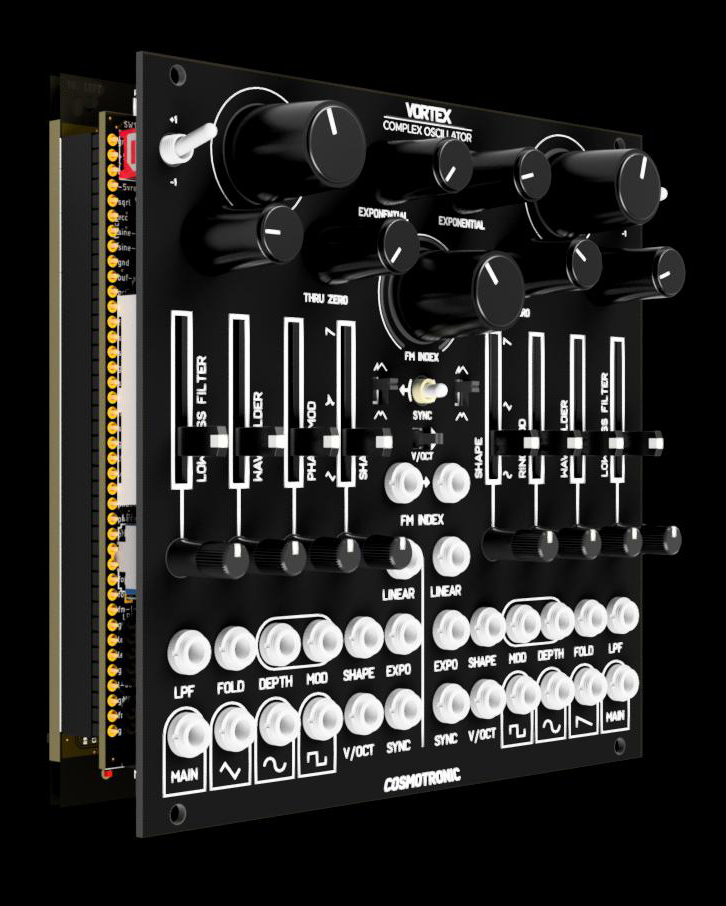
Cosmotronic’s product range is relatively modest, but we’ve been impressed in recent months by the likes of the Peradam sidechained distortion and Messor stereo compressor. The early concept for the Vortex was first shown in January 2021, when Cosmotronic shared video of an early working unit. The final version shares the same basic formula as that original prototype, albeit with a number of tweaks to add features and improve usability. The design of the Vortex is best viewed from the centre outwards, reflecting the signal flow: the central section is where you control sync (soft/hard) and frequency moduluation (both exponential and through-zero linear), then each VCO has its own controls for four main parameters: wave shape, modulation (phase mod on VCO1 and ring mod on VCO2), wavefolding and a dedicated non-resonant low-pass filter for each VCO. You can modulate every parameter using CV, but you can get started without any modulation sources thanks to the way the Vortex is internally normalled. VCO1’s sine output is normalled to VCO2’s modulation inputs, and vice versa, meaning that you have built-in modulation sources for everything before you even think about patching in other signals.
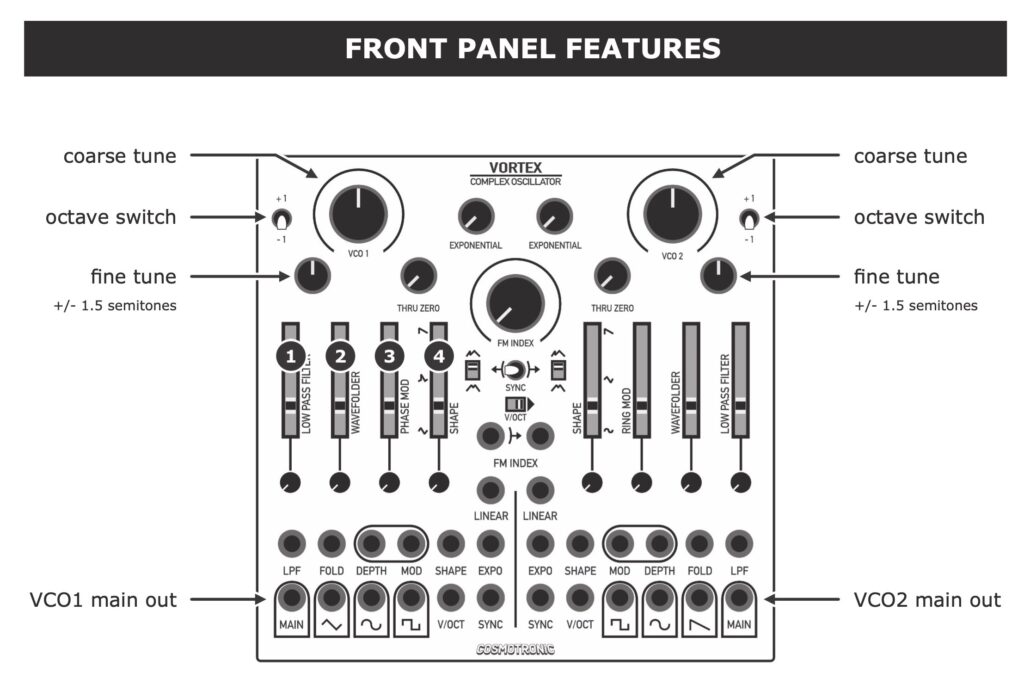
Straight out of the box, the Vortex tracks precisely and offers a range of interesting tones before you even touch the modulation options. The two oscillators are both triangle-core VCOs base on the SSI2130 chip, but the implementation is slightly different on each ‘side’ of the module: most notably the two VCOs morph through different shapes using their Shape controls, sine/trapezoid/saw for VCO1 and sine/triangle/inverse saw for VCO2. It’s not obvious from the front panel, but the wavefolders are also different, meaning that the raw tones of each oscillator are fundamentally different and you have a lot more options as a result. You’d be missing out if you didn’t explore beyond the basic VCO controls, but at the heart of the Vortex you’ve essentially got two extremely good oscillators. It’s also worth mentioning that the use of sliders for the four main parameters of each VCO helps to keep things logical and compact here. Rotary pots might feel slightly more precise, but the sliders give you quick visual feedback as well as hands-on control. The knobs below each slider are attenuators for incoming modulation sources, whether internally normalled or patched in below.
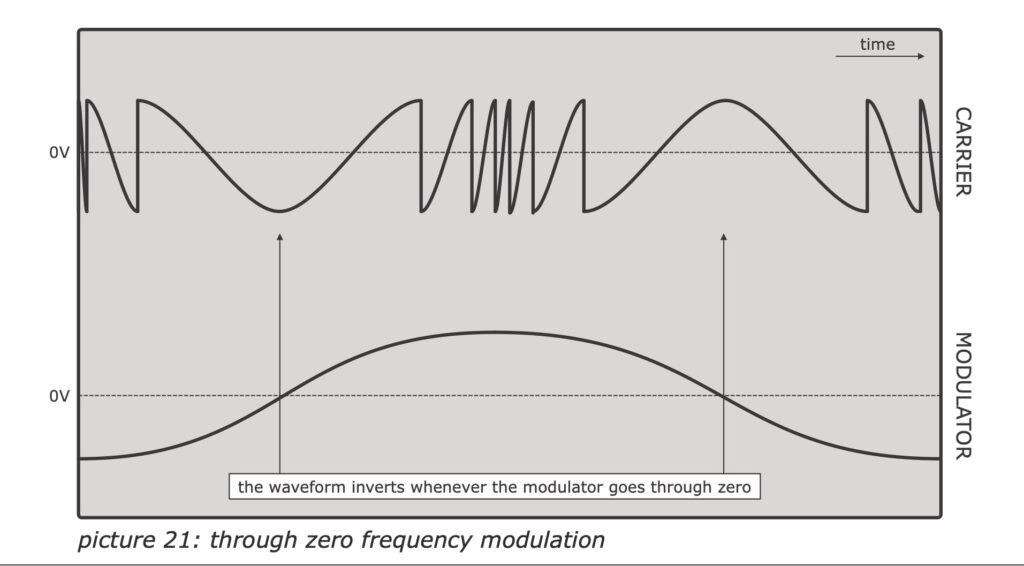
Of course, the raw oscillator tones are only a tiny fraction of what the Vortex is capable of. Once you start digging into the modulation options, it’s hard not to be wowed by the sheer depth of this module. The key feature here is the way that FM has been implemented, with dedicated controls for linear and exponential FM on each oscillator, plus a large, central FM Index knob which controls the global amount of FM (you can almost think of it as an override control which dials down each of the four FM parameters from the maximum settings you’ve chosen with their individual knobs). This proves particularly fun as a master control while a sequence plays; the Vortex has a lot of hands-on tweaking appeal which will lend itself well to live performance, but being able to pre-define an FM sound then dial out the FM completely and introduce it gradually is a neat touch.
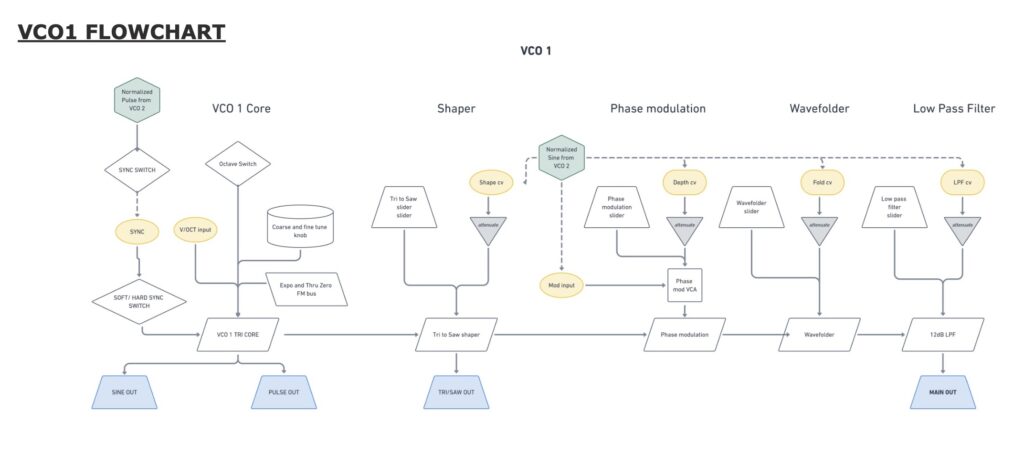
The octave switches on each VCO prove useful for FM patches, allowing you to alter the ratios of the oscillators quickly at the flick of a switch. There are other similarly well thought-out touches that help you use the module, such as the slide switch which routes VCO1’s V/oct input to VCO2, or the two separate CV inputs for FM Index, allowing you to control the amount of FM for each VCO independently (or together). Sync, ring mod and phase modulation bring their own unique flavours to the party, further expanding the range of sounds you can coax out of the two oscillators. There’s no way to avoid it sounding like hyperbole, but the depth of the Vortex feels just about infinite.
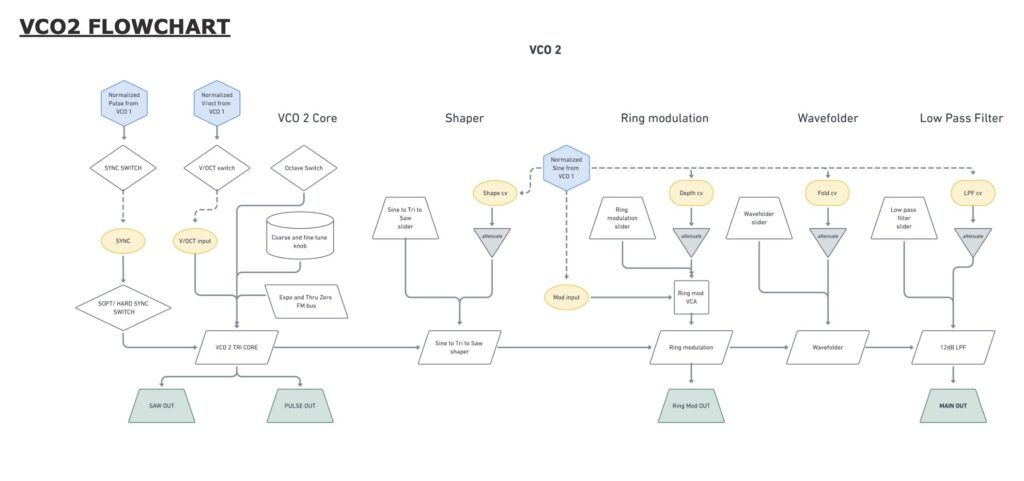
Other than the sound itself, the most impressive thing about the Vortex is how effective the layout and control setup is, making the whole module easy to use. Some complex oscillator modules lean in quite heavily to the idea of complexity, making the whole thing a bit unmanageable in some cases, but it’s the ease of use which really makes the Vortex a winner. Cosmotronic make a point of mentioning the effort which went into designing the module so that the sliders keep you in the sweet spot and produce interesting results almost no matter what you do.
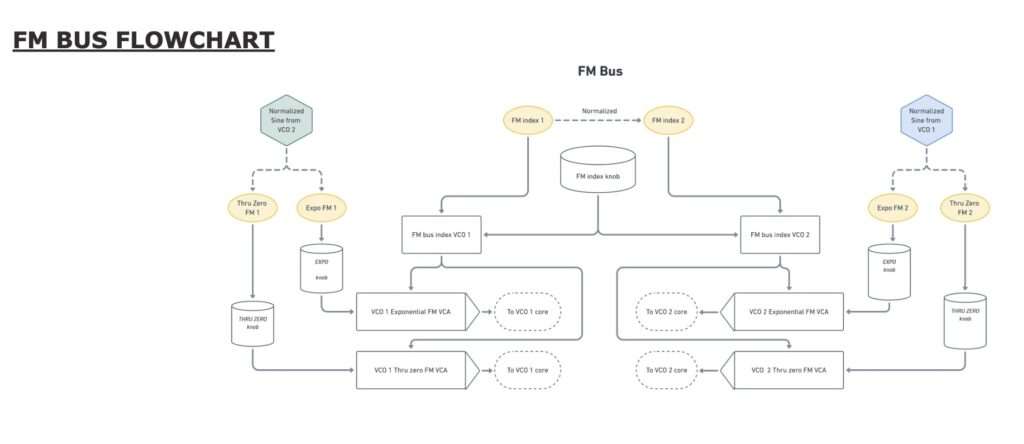
It’s an impressive achievement that the Vortex feels quite intuitive and rarely leaves you scratching your head trying to bring it under control. The 22-page manual does a good job of explaining the details of how everything works and breaking down the convoluted signal flow, but the Vortex is a module which you can get a lot out of without paying any thought to what’s going on behind the scenes.
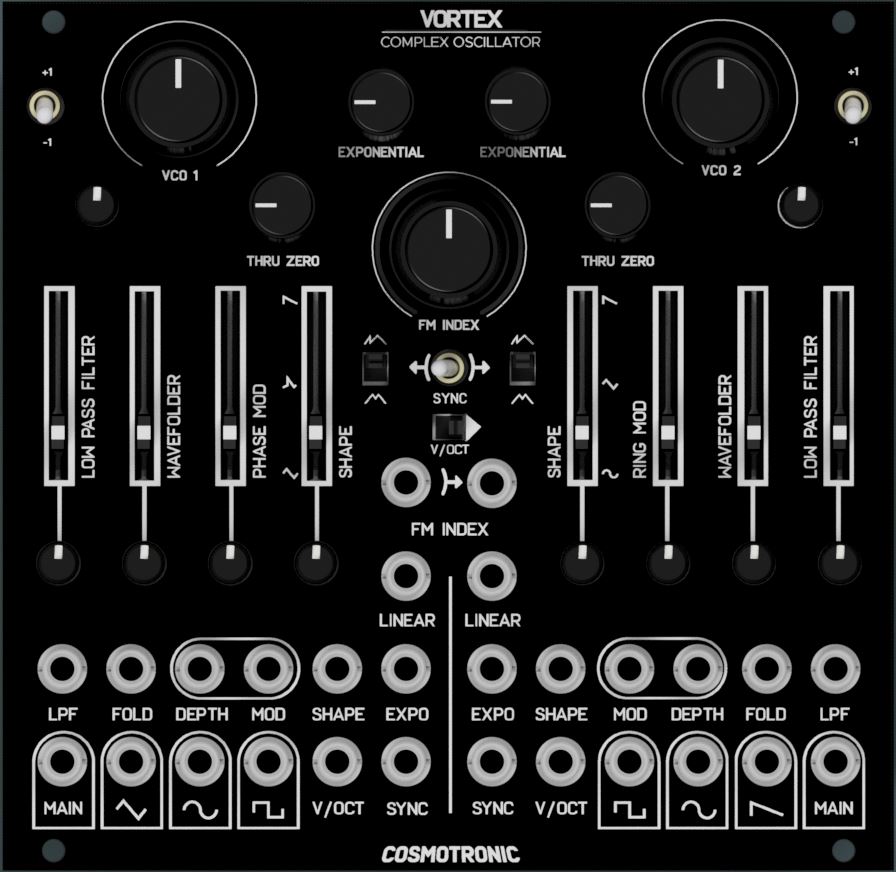
The Vortex has hugely impressive depth, capable of generating everything from harsh, buzzy FM tones to rich, classic West Coast subtlety. The total of eight separate outputs give you the option of everything from basic waveforms to wavefolded harmonics before you explore the vast modulation possibilities. Complex oscillators are rarely cheap on account of the fact that they contain so many different elements, but the Vortex sits in the same kind of price range as alternatives like the Frap Tools Brenso or Endorphin.es Furthrrrr Generator. It’s not a question of which is better so much as different takes on a general concept, but the Vortex is so user-friendly and so deep that it easily holds its own. In fact, you could have a lot of fun with little more than a sequencer, Vortex, envelope generator and VCA. It’s a real beauty of a module which we think will be a huge success for Cosmotronic.
Greg Scarth
More info/buy